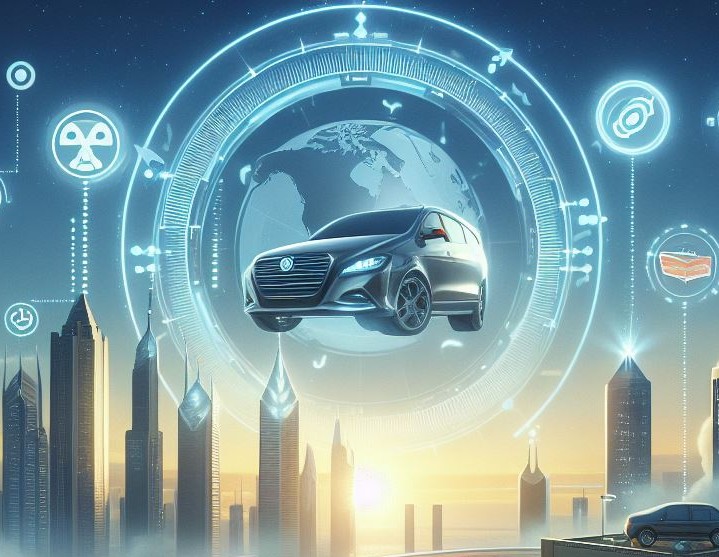Li Auto's Focus on Autonomous Driving and EV Development
2023-07-30
Li Auto, a company in the automotive industry, recently held a call meeting to discuss their production capacity and ability to meet sales targets. CEO Xiang Li provided details on production lines and shifts, highlighting the potential for increased production output. The meeting concluded with closing remarks from Janet Chang, the director of investor relations.
The most important topic discussed in the meeting was the company's delivery goals and plans for the second quarter, including reaching a monthly delivery mark of 33,000 units by June.

The single most interesting topic discussed in this meeting is the company's focus on autonomous driving and electric vehicle (EV) development. The company has already made significant progress in autonomous driving, with the introduction of their highway feature that has served over 280,000 families and accumulated over 140 million kilometers of highway NOA mileage. Now, they are taking it a step further by bringing the NOA feature to urban driving scenarios with the launch of City NOA. This feature will be beta tested on the Li AD Auto Max 3.0 and the company aims to roll it out in 100 cities across the country by the end of 2023.
In terms of EV development, the company is working on powertrain platforms and products, specifically focusing on Extended Range Electric Vehicles (EREVs) and High-Power Charging Battery Electric Vehicles (HPC BEVs). They are aiming to enhance the efficiency of range extenders for EREVs, allowing users to drive on battery power for urban commutes. This shows the company's commitment to sustainable transportation and their efforts to provide efficient and environmentally friendly options for consumers.
Overall, the company's focus on autonomous driving and EV development highlights their dedication to innovation and staying at the forefront of the automotive industry. By expanding their autonomous driving capabilities and improving their EV offerings, they are positioning themselves as a leader in the future of transportation.
The market outlook for the company is positive, with a goal to reach 33,000 monthly deliveries by June and the release of their BEV flagship in Q4. They believe that increased competition in the market is beneficial for their product and have observed steady growth in orders for their L8 model. Tesla's Model Y is seen as their top competitor. The company aims to increase market share in the EV market and does not plan to offer discounts. They have set a full-year R&D spending guidance of RMB 10 billion to RMB 12 billion and plan to improve the SG&A expense ratio. Overall, the company's market outlook is optimistic, with a focus on increasing market share and maintaining profitability.
The key drivers of the business are the brand, the environment, and the society. Additionally, the company is focused on autonomous driving and battery electric vehicle (BEV) development, with plans to introduce autonomous driving features for urban driving scenarios and expand the feature to 100 cities by the end of 2023. The company is also working on improving the efficiency of range extenders for extended-range electric vehicles (EREVs) and enhancing technology for high-power charging (HPC) BEVs to offer a rapid charging experience comparable to gasoline vehicles. The company aims to have a portfolio of seven models, including one super model, a flagship model, five EREVs, and five HPC BEVs by 2025. They also plan to deploy a fast charging network, with the goal of building 300 charging stations in highway service areas by the end of 2023 and expanding to 3,000 charging stations by the end of 2025.
The company's plans for product/service include offering competitive products without discounts, launching various models of battery electric vehicles, electric vehicles, and extended-range electric vehicles by 2025, investing in research and development and supply chain for in-house parts, deploying charging stations to tackle range anxiety, and upgrading stores to accommodate multiple vehicles and offer better test driving experiences.
The most important Key Performance Indicators (KPIs) discussed in the meeting were:
1. Delivery Numbers: The company aimed to increase its delivery numbers and reach a monthly mark of 33,000 units by June of the current quarter. This indicated a focus on expanding their customer base and increasing sales.
2. BEV Flagship Release: The company planned to release its flagship Battery Electric Vehicle (BEV) in the fourth quarter. This was a significant milestone for the company and indicated their commitment to innovation and introducing new products to the market.
3. SG&A Expense Ratio: The company mentioned that they were working on improving their SG&A (Selling, General, and Administrative) expenses as a percentage of revenue. This showed their focus on controlling costs and optimizing their operations.
4. R&D Spending Guidance: The company planned to maintain its full-year guidance for Research and Development (R&D) spending. This indicated their commitment to investing in research and development activities to drive innovation and stay competitive in the market.
The company's outlook for the second quarter of 2023 was positive, with expectations of a significant increase in vehicle deliveries and total revenue compared to the same period in the previous year. However, this outlook was subject to change depending on macroeconomic conditions and potential disruptions in the supply chain.
The company's progress on strategic initiatives can be summarized as follows:
1. Delivery Numbers: The company planned to gradually increase its delivery numbers and aimed to reach a monthly mark of 33,000 units by June of this quarter.
2. BEV Flagship: The company planned to release its BEV flagship in Q4 and would make the vehicles available for static viewing and test drives at retail stores.
3. Expense Control: The company had been successful in controlling its SG&A expenses, which had either remained flat or slightly declined quarter over quarter. The company aimed to further improve the SG&A expense ratio as a percentage of revenue.
4. R&D Spending: The company planned to maintain its full-year guidance for R&D spending, which ranged from RMB 10 billion to RMB 12 billion.
5. Market Competition: Despite competition from other carmakers, the company had observed steady growth in orders for its L8 product.
The company's capital spending plans included an estimated capital expenditure of RMB 18 billion for the current year, which included investment in High Power Charging (HPC). The company's capex for the past three years had been around RMB 10 billion. If the early test on HPC was successful, the capex may expand to RMB 15 billion. The company was also investing in R&D and supply chain for battery electric vehicle (BEV) products. The goal was to offer BEV products at a similar price point and achieve a similar gross margin as electric vehicle (EV) products. The company planned to deploy charging stations in service areas and highways to address range anxiety and upgrade stores to accommodate multiple vehicles in its product portfolio. In cities where the company had a high market share, there were also plans for capital spending.
The participants of the call mentioned in the meeting outcome included Janet Chang, Director of Investor Relations; Xiang Li, Founder, Chairman, and Chief Executive Officer; Johnny Tie Li, Chief Financial Officer; Tim Hsiao, Morgan Stanley Analyst; Bin Wang, Credit Suisse Analyst; Paul Gong, UBS Analyst; Ming Lee, Bank of America Merrill Lynch Analyst; Yuqian Ding, HSBC Analyst; Yingbo Xu, Citic Group Analyst; Jing Chang, CICC Analyst; and Jiong Shao, Barclays Analyst. These individuals represented various financial institutions and were actively involved in analyzing and assessing the company's performance. Their presence on the call indicated the interest and importance of Li Auto's financial updates and future prospects.
In conclusion, Li Auto's recent conference call involved key executives such as Xiang Li, the Founder, Chairman, and CEO, along with other top analysts from prominent financial institutions. The company discussed their plans and developments in autonomous driving, powertrain platforms, and fast charging network deployment during the meeting. They planned to introduce autonomous driving 3.0 and release city NOA for beta testing. They were also working on developing extended-range electric vehicles and high-power charging BEVs to enhance efficiency and offer rapid charging comparable to gasoline vehicles. By 2025, they aimed to have a portfolio of seven models, including one super model, flagship model, five EREVs, and five HPC BEVs. They also had plans to build 300 charging stations in highway service areas by the end of 2023 and expand to 3,000 charging stations by the end of 2025.

